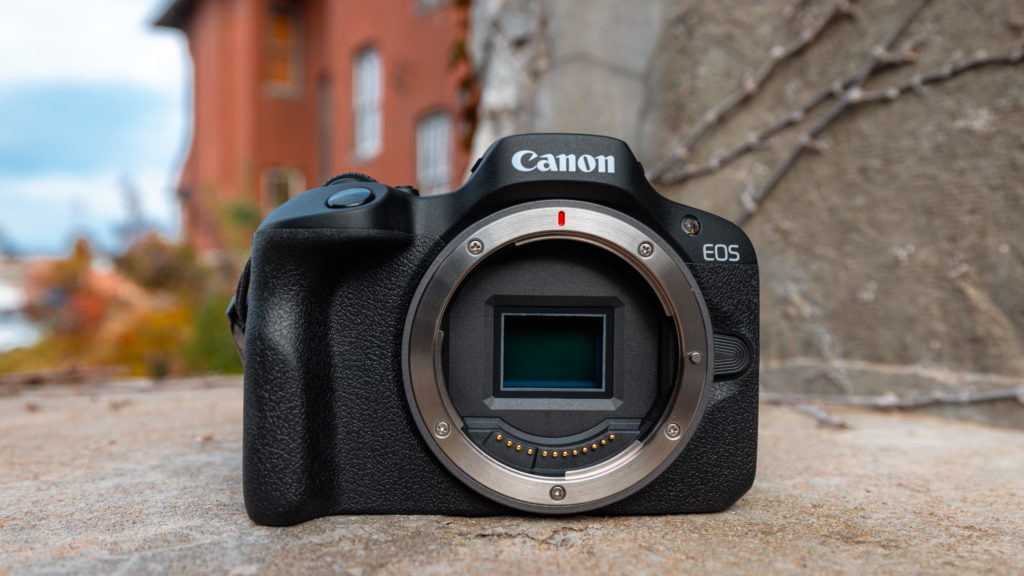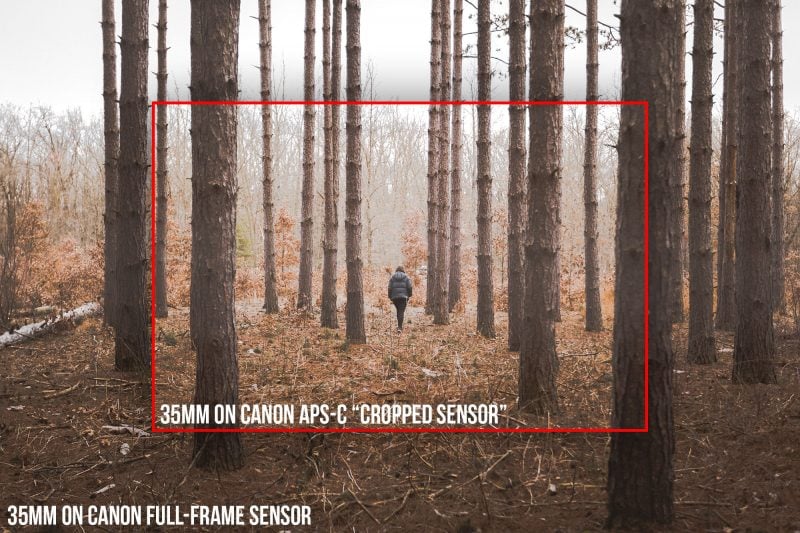This crop factor calculator tool is a valuable resource for photographers and videographers. It helps determine the effective focal length of a lens on a camera with a sensor smaller than full-frame. By understanding the crop factor, photographers can better plan their shots and achieve the desired composition.
Input your lens and camera details to get started.
What is Crop Factor?

Crop factor, also referred to as focal length multiplier, is a relative measure of how much a camera sensor crops the field of view compared to a full-frame sensor. It is expressed as a ratio, indicating how much smaller the sensor is in relation to a full-frame sensor. So for example if you are using a 24mm lens on a Canon APS-C sensor it would be more similar to a 38mm since the image is “cropped” in. Crop factors vary by sensor size, in this tool I’ve included Canon’s APS-C, Micro 4/3, APS-H, Nikon APS-C, Medium Format and other sensor sizes.
How Does Crop Factor Affect Photography?
Understanding crop factor is essential because it affects the effective focal length of a lens. When using a camera with a smaller sensor, the field of view is reduced, resulting in a narrower angle of view compared to a full-frame camera. This means that lenses on a cropped sensor camera appear to have a longer reach than they actually do.

For example, if you are using a lens with a focal length of 50mm on a camera with a crop factor of 1.5x, the effective focal length would be 75mm (50mm x 1.5). This can be advantageous for telephoto photography, as it allows photographers to achieve more magnification without the need for longer lenses.
On the other hand, the crop factor can be a disadvantage when shooting wide-angle scenes. A lens with a focal length of 24mm on a camera with a crop factor of 1.5x would have an effective focal length equivalent to 36mm (24mm x 1.5), resulting in a narrower field of view. The crop also affects the amount of light brought to the sensor meaning cropped sensors will also get less light from the lens. This also affects the depth of field a lens can offer as well.
How Does the Crop Factor Calculator Tool Work?
A crop factor calculator tool simplifies the process of determining the effective focal length. By inputting your camera’s crop factor and the focal length of the lens you are using, the calculator instantly provides you with the equivalent focal length.
- Enter the crop factor: Start by entering the crop factor of your camera. This information can usually be found in your camera’s manual or specifications.
- Enter the lens focal length: Input the focal length of the lens you are using. Make sure to use the actual focal length, not the equivalent focal length.
- Calculate the equivalent focal length: Click on the “Calculate” button, and the tool will display the equivalent focal length based on your inputs.
A crop factor calculator tool saves photographers and videographers valuable time and helps them make informed decisions when choosing lenses for different shooting scenarios.
Conclusion
A crop factor calculator tool is an essential resource for photographers and videographers. Especially for beginners just getting into photography and understanding how cameras work. Understanding how crop factor affects the effective focal length of lenses is crucial for achieving the desired composition in different shooting situations. By using the calculator, photographers can optimize their camera settings and lens choices to capture stunning and well-composed shots.
